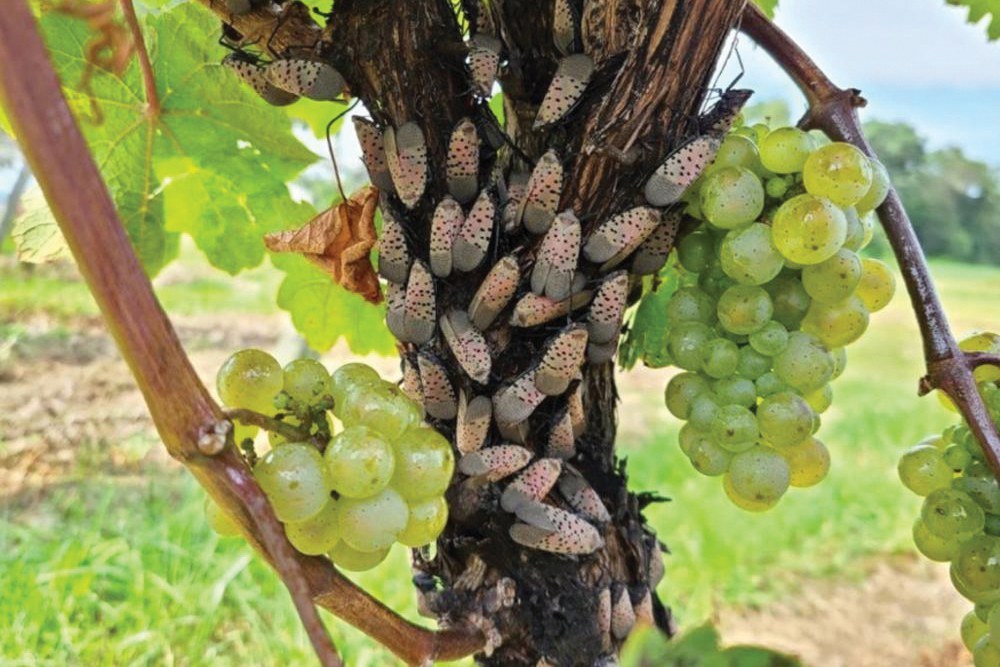Posted: March 30, 2023
Good news for the wine industry on smaller infestations.

Photo: Penn State
While heavy infestations of spotted lanternfly on grapevines -- especially in successive years -- can result in demise for some vines, most vines may be able to survive lighter infestations with few ill effects.
That conclusion -- reached by a team of researchers in the college who conducted a new study on the invasive planthopper's effect on grapevine biology -- may reassure vineyard owners nationwide who fear that the onslaught of hordes of the ravenous sap-sucking insects will devastate their businesses. But the jury is still out, pending more research, according to Andrew Harner, postdoctoral scholar in the Department of Plant Science, who spearheaded the study.
Since spotted lanternflies, native to East Asia, appeared in the United States in 2014, large infestations and subsequent economic damage have been reported in cultivated grapevines. Starting in 2017, some Pennsylvania grape growers have reported severe damage to their vineyards from adult spotted lanternflies.
Grape growers often spray insecticide to kill spotted lanternflies because they are afraid the insects can damage their vines and decrease fruit quality, but researchers have seen that the insects can reinfest the vineyards soon after chemical control.
In findings recently published in Plant Direct, the researchers reported that phloem (or sap) feeding by low-to-medium populations of spotted lanternflies -- up to 60 insects per vine -- had minimal effects. But greater populations of lanternflies -- 70 to 200 per vine -- increasingly affected grapevine species' crop production and plant health.
--Jeff Mulhollem
Features
Breaking the Silence on Farm Stress
Farming has always been a demanding profession, but today's farmers face unprecedented pressures that can severely impact their mental health.
Biting Back
Research Targets Vector-Borne Diseases to Save Lives
Leading Forward
Ott brings deep connection to role of dean.


